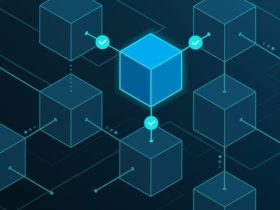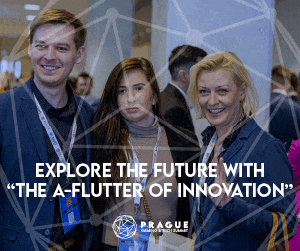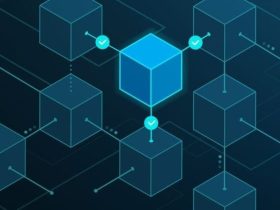In today’s rapidly evolving digital era, artificial intelligence continues to reshape industries, redefine research paradigms, and revolutionize the way we live, work, and learn. From breakthrough tools that empower developers to build sophisticated AI agents to transformative discoveries that unearth lost civilizations hidden beneath the world’s vast deserts, the AI landscape is brimming with innovation. Equally compelling is the historic establishment of a new academic hub dedicated to AI and cybersecurity, groundbreaking cloud-based AI services from global tech giants, and Google’s latest technological marvel—Gemma 3. In this in-depth, op-ed–style briefing, we explore and analyze these groundbreaking developments, offering insights, commentary, and perspectives on the trends that are steering the future of artificial intelligence.
Spanning developments in research, education, industry, and cultural heritage, today’s briefing is designed to provide a comprehensive overview of the most impactful AI stories of the day.
1. OpenAI’s New Tools for Building Agents: Empowering the Next Generation of Intelligent Systems
In a move that underscores its commitment to democratizing access to advanced AI technologies, OpenAI has recently unveiled a suite of innovative tools designed to facilitate the creation and deployment of intelligent agents. These tools are engineered to empower developers, researchers, and organizations by streamlining the process of building sophisticated AI agents that can operate autonomously in a variety of environments.
Source: OpenAI
A New Era for Agent-Based AI
OpenAI’s announcement marks a significant milestone in the evolution of agent-based systems. With these new tools, developers can now harness powerful libraries and frameworks that simplify the construction of agents capable of decision-making, learning, and adaptive behavior. This breakthrough is particularly significant for industries that rely on real-time data analysis, personalized customer experiences, and automated decision-making processes. By reducing the barriers to entry, OpenAI is effectively inviting a broader spectrum of innovators to explore the vast possibilities that intelligent agents offer.
Key Features and Innovations
Among the standout features of these new tools is an emphasis on modularity and scalability. Developers can now piece together various AI components—ranging from natural language processing to computer vision—into cohesive systems that can learn from their environments and adapt to complex challenges. Moreover, the tools incorporate state-of-the-art machine learning models that are optimized for performance and accuracy, ensuring that the resulting agents can operate effectively in dynamic real-world scenarios.
The integration of these tools into existing development environments is expected to accelerate research and innovation. Startups, academic institutions, and large enterprises alike can now experiment with agent-based systems without needing to invest heavily in proprietary infrastructure. This democratization of AI technology is likely to foster a new wave of creative applications, from autonomous customer service representatives to advanced robotics in manufacturing.
Implications for the AI Ecosystem
In my view, OpenAI’s new tools represent more than just a technical upgrade—they signal a paradigm shift in how AI is developed and deployed. By lowering the technical and financial hurdles associated with building intelligent agents, OpenAI is catalyzing a broader transformation within the AI ecosystem. This development is set to spur innovation across various sectors, including healthcare, finance, retail, and logistics, where intelligent automation can drive efficiency and enhance decision-making processes.
Furthermore, the focus on agent-based systems highlights a growing trend toward creating AI that is not only reactive but also proactive. Such systems are increasingly capable of anticipating user needs, optimizing operations, and providing personalized experiences at scale. As AI continues to permeate every facet of our daily lives, the ability to build robust and adaptable agents will be crucial in ensuring that technology remains aligned with human values and societal goals.
Expert Commentary
Industry experts have lauded OpenAI’s initiative, noting that the democratization of advanced AI tools will likely spark a surge in innovative applications. Many believe that these tools could serve as the backbone for next-generation AI research, accelerating the development of systems that are both intelligent and ethically aligned. In this context, OpenAI’s announcement is not just about technological progress—it’s about laying the foundation for a future where AI is accessible, versatile, and transformative.
2. AI Discovery Unearths 5,000-Year-Old Lost Civilizations Hidden Beneath the World’s Largest Deserts
In an astonishing blend of archaeology and artificial intelligence, researchers have leveraged cutting-edge AI algorithms to reveal hidden traces of 5,000-year-old lost civilizations buried beneath some of the world’s largest deserts. This groundbreaking discovery is reshaping our understanding of human history and the potential of AI in uncovering secrets of the past.
Source: Indian Defense Review
The Convergence of Technology and Archaeology
Traditionally, the field of archaeology has relied on painstaking manual surveys and conventional remote sensing techniques to locate ancient sites. However, recent advancements in AI have transformed this process. Sophisticated image recognition and pattern analysis tools now enable researchers to analyze vast amounts of satellite imagery and geospatial data with unprecedented speed and accuracy. The application of these techniques has led to the discovery of previously unknown structures and settlement patterns that hint at a once-thriving civilization hidden beneath the harsh sands of the world’s great deserts.
How AI Is Revolutionizing Historical Research
The AI-driven approach adopted by researchers in this discovery is a testament to the versatility and transformative power of machine learning. By training algorithms on extensive datasets that include topographical maps, historical records, and satellite images, researchers can now identify anomalies and patterns that human analysts might easily overlook. In this instance, the AI system was able to detect subtle variations in terrain and soil composition, leading to the identification of ancient urban layouts and ceremonial sites.
This discovery not only broadens our understanding of early human civilization but also illustrates the profound impact that AI can have on historical research. With further refinement, these techniques could uncover countless other hidden relics of our past, offering new insights into how ancient societies lived, organized, and interacted with their environment.
Broader Implications for Cultural Heritage and Preservation
Beyond the immediate excitement of a major archaeological find, the integration of AI in this field holds significant promise for cultural heritage preservation. By systematically scanning and analyzing vast tracts of land, AI can help identify endangered historical sites before they are lost to natural erosion, urban expansion, or conflict. This proactive approach to cultural preservation ensures that priceless historical knowledge is safeguarded for future generations.
Reflecting on the Discovery
From an op-ed perspective, this discovery is emblematic of a broader trend where AI is breaking traditional boundaries. The ability of artificial intelligence to delve into the annals of history and reveal secrets that have been hidden for millennia underscores its potential as a tool not just for commercial or industrial applications, but for enriching our cultural and historical understanding. The fusion of ancient history and modern technology invites us to reimagine the narratives of our past and consider the profound ways in which AI can contribute to human knowledge.
3. Historic $40 Gift Establishes Bellini College of Artificial Intelligence and Cybersecurity
In a landmark moment for academic innovation, a historic $40 million gift has led to the establishment of the Bellini College of Artificial Intelligence and Cybersecurity. This transformative initiative is poised to create a premier educational institution dedicated to advancing research, fostering talent, and promoting ethical practices in AI and cybersecurity.
Source: USF News
A Vision for the Future of AI Education
The creation of the Bellini College marks a significant investment in the future of AI and cybersecurity education. This initiative is set to become a world-class center for learning and research, bringing together leading experts, innovative startups, and groundbreaking research projects under one roof. The substantial financial commitment underscores the importance of nurturing the next generation of AI professionals who will shape the technological and ethical landscape of the future.
Bridging the Gap Between Academia and Industry
One of the most compelling aspects of the Bellini College is its focus on bridging the gap between academic research and real-world application. With a curriculum that integrates theoretical foundations with hands-on experiences, the college aims to equip students with the skills necessary to tackle complex challenges in AI and cybersecurity. In an era where digital threats are becoming increasingly sophisticated, the need for robust, ethical, and innovative cybersecurity solutions has never been more urgent.
The interdisciplinary approach promoted by the college encourages collaboration across fields such as computer science, data analytics, ethics, and law. This holistic perspective is critical for developing AI systems that are not only powerful and efficient but also secure, transparent, and aligned with societal values.
Driving Innovation and Economic Growth
The establishment of the Bellini College is expected to have far-reaching implications beyond the realm of education. By fostering a culture of innovation and entrepreneurship, the college will serve as an incubator for cutting-edge technologies and startups. The research and development emerging from this institution could drive significant advancements in AI, cybersecurity, and related fields, ultimately contributing to economic growth and technological leadership on a global scale.
Educational and Ethical Considerations
As AI continues to permeate every aspect of modern life, questions regarding ethics, accountability, and transparency become increasingly critical. The Bellini College is uniquely positioned to address these issues by integrating ethical considerations into its curriculum and research agendas. This forward-thinking approach ensures that the next generation of AI professionals is not only technically proficient but also deeply committed to using technology for the greater good.
My Perspective on This Milestone
In my view, the creation of the Bellini College of Artificial Intelligence and Cybersecurity represents a pivotal moment for the academic and professional AI community. It symbolizes a commitment to investing in human capital and advancing research that is both innovative and responsible. As industries around the world grapple with the challenges of digital transformation and cybersecurity threats, educational initiatives like this are essential for building a resilient, forward-thinking workforce equipped to navigate the complexities of the digital age.
4. Microsoft Azure Unveils the Responses API and Computer Using Agent in Azure AI Foundry
Continuing the trend of technological innovation, Microsoft Azure has announced the launch of its new Responses API and the introduction of a computer-using agent within its Azure AI Foundry. This initiative is set to redefine how cloud-based AI services are integrated and deployed across various industries, offering unprecedented capabilities and flexibility.
Source: Microsoft Azure Blog
Revolutionizing Cloud AI Services
Microsoft Azure’s latest announcement is a bold step toward enhancing the accessibility and utility of cloud-based AI solutions. The Responses API is designed to simplify the process of interacting with AI systems, enabling developers to integrate advanced functionalities into their applications with minimal effort. This API acts as a bridge between complex AI models and user-facing applications, streamlining data processing, decision-making, and automated responses.
The Role of the Computer Using Agent
In tandem with the Responses API, the introduction of a computer-using agent within the Azure AI Foundry offers a novel way to manage and deploy AI-driven tasks. This agent is engineered to autonomously execute processes, analyze data in real time, and optimize workflows without direct human intervention. Such capabilities are particularly valuable in environments where rapid data analysis and agile decision-making are critical, such as in finance, healthcare, and supply chain management.
Enhancing Developer and Business Capabilities
By offering these new tools, Microsoft Azure is not only enhancing its suite of cloud-based services but also setting new benchmarks for AI integration. Developers now have the ability to craft highly responsive, intelligent applications that can learn and adapt to user behavior. Businesses, in turn, can leverage these innovations to streamline operations, reduce costs, and enhance customer experiences. The flexibility and scalability of the Azure AI Foundry ensure that organizations of all sizes can benefit from state-of-the-art AI capabilities without the burden of complex infrastructure requirements.
Strategic Implications for the Industry
The move by Microsoft Azure to introduce such advanced AI tools underscores the competitive nature of the cloud computing market. In an era where data-driven decision-making is paramount, the ability to rapidly deploy intelligent agents and harness the power of machine learning is a distinct competitive advantage. From my perspective, this development not only solidifies Microsoft’s leadership in cloud technology but also sets the stage for a new wave of innovation in how businesses interact with and benefit from artificial intelligence.
The Future of Cloud AI
Looking ahead, the integration of the Responses API and the computer using agent into Azure’s ecosystem is likely to spur further advancements in cloud-based AI solutions. As developers and enterprises adopt these tools, we can expect to see a surge in innovative applications that blur the lines between automated processes and human oversight. This convergence of automation and intelligent decision-making is poised to drive efficiency, productivity, and innovation across industries.
5. Google’s Gemma 3: Pushing the Boundaries of AI Innovation
In another major development from the world of artificial intelligence, Google has unveiled Gemma 3—a cutting-edge technology that represents the next frontier in AI research and development. With a focus on enhancing machine learning capabilities and streamlining developer workflows, Gemma 3 is poised to make significant waves in the tech community.
Source: Google Blog
Unpacking Gemma 3
Gemma 3 is designed to build on the successes of its predecessors while introducing a host of new features that expand its functionality and performance. At its core, Gemma 3 leverages advanced deep learning models and optimized algorithms to deliver faster, more accurate insights. This breakthrough is particularly relevant for developers who require robust tools for data analysis, predictive modeling, and real-time decision-making.
What Sets Gemma 3 Apart
One of the key differentiators of Gemma 3 is its emphasis on seamless integration. Google has engineered this platform to be highly compatible with a wide array of development environments and data ecosystems, making it easier than ever for organizations to incorporate cutting-edge AI into their operations. The platform’s user-friendly interface and streamlined workflows significantly reduce the time required to deploy and iterate on complex AI models, thereby accelerating innovation and time-to-market.
Moreover, Gemma 3 is built with scalability in mind. Whether it’s processing vast datasets, optimizing algorithms on the fly, or supporting collaborative research across global teams, Gemma 3 is engineered to meet the demands of modern enterprises. This scalability ensures that the platform can grow alongside the needs of businesses and researchers, offering a flexible solution that adapts to evolving technological challenges.
Implications for Developers and Enterprises
For developers, Gemma 3 offers a powerful toolkit that simplifies the complexities of machine learning and artificial intelligence. By providing advanced features in a user-centric design, Google is empowering developers to experiment, innovate, and deploy AI solutions more rapidly. For enterprises, the potential applications of Gemma 3 are vast—from enhancing customer service through predictive analytics to optimizing internal operations with intelligent automation. The launch of Gemma 3, therefore, not only marks a technological milestone for Google but also signals a broader shift in the way AI is harnessed to drive business value.
Analyzing the Impact
From an industry perspective, the introduction of Gemma 3 is a clear indicator of the rapid pace at which AI technology is evolving. Google’s continuous investments in AI research have consistently pushed the boundaries of what is possible, and Gemma 3 is no exception. In my analysis, this new development reinforces the notion that innovation in artificial intelligence is not a static endpoint but a continuously evolving journey. As technologies like Gemma 3 mature, they will undoubtedly open up new avenues for research, collaboration, and application across industries.
6. Synthesis and Analysis: Key Trends and Implications for the AI Industry
Having examined each of today’s headline stories in detail, it is now important to step back and consider the broader implications of these developments for the AI ecosystem as a whole. The convergence of breakthroughs in agent-based systems, historical research, academic investment, cloud AI services, and next-generation machine learning platforms paints a picture of an industry that is dynamic, multifaceted, and rapidly expanding.
Democratization of Advanced AI Technologies
One of the most consistent themes emerging from today’s news is the democratization of advanced AI capabilities. OpenAI’s new suite of tools is designed to lower the barriers for developers to create intelligent agents. Similarly, Google’s Gemma 3 and Microsoft Azure’s new offerings underscore the drive to make high-powered AI more accessible to a broad range of users. This democratization is crucial—not only does it spur innovation, but it also ensures that the benefits of AI are distributed more equitably across industries and communities.
Bridging the Gap Between Research and Real-World Applications
Another key trend is the seamless integration of academic research with practical applications. The establishment of the Bellini College of Artificial Intelligence and Cybersecurity exemplifies the growing recognition of the need to cultivate a workforce that is adept at navigating both theoretical and applied dimensions of AI. As AI continues to infiltrate every sector—from healthcare to finance to national security—the importance of bridging the gap between research and real-world applications cannot be overstated. Educational initiatives like Bellini College are laying the groundwork for a future where technological innovation is closely aligned with ethical, societal, and economic imperatives.
Cross-Disciplinary Collaboration and Innovation
The diverse range of stories covered in this briefing—from the uncovering of lost civilizations using AI to the launch of cutting-edge cloud-based services—highlights the inherently interdisciplinary nature of modern AI. The field is increasingly defined by collaborations that span across disciplines, bringing together experts from computer science, archaeology, cybersecurity, and beyond. This cross-pollination of ideas is not only fueling breakthroughs but also ensuring that AI systems are developed with a holistic understanding of the challenges and opportunities that lie ahead.
The Role of AI in Cultural and Historical Preservation
Perhaps one of the most surprising yet inspiring developments is the use of AI in uncovering and preserving cultural heritage. The discovery of a 5,000-year-old lost civilization beneath the world’s largest deserts serves as a powerful reminder of how technology can unlock the secrets of our past. This intersection of AI and archaeology not only broadens our historical knowledge but also paves the way for future endeavors that combine technology with cultural preservation. It is a testament to the versatility of AI that it can be harnessed to explore realms as diverse as digital commerce and ancient history.
Cloud Integration and the Future of AI Infrastructure
The announcements from Microsoft Azure and Google reflect a broader trend toward the integration of AI with cloud-based infrastructure. As businesses and developers increasingly rely on the cloud to power their applications, the need for robust, scalable, and flexible AI solutions becomes ever more apparent. The launch of the Responses API and computer using agent in Azure AI Foundry, along with Google’s Gemma 3, highlights a future where cloud services will be at the forefront of AI innovation. These tools promise to streamline development processes, reduce time-to-market, and ultimately drive efficiency across a wide array of industries.
Expert Opinions and Forward-Looking Perspectives
In my view, the trends highlighted in today’s briefing are indicative of a broader movement toward an AI-enabled future that is more accessible, integrated, and interdisciplinary than ever before. The continuous push to lower entry barriers, coupled with investments in education and research, is setting the stage for a new era of innovation. Moreover, the emphasis on ethical and secure AI—as evidenced by initiatives in cybersecurity and regulatory oversight—ensures that progress is tempered with responsibility. This balance between rapid innovation and thoughtful oversight is, in my opinion, one of the most important aspects of the current AI landscape.
7. Conclusion: Charting the Future of AI in a Transformative Era
As we draw this daily trends briefing to a close, it is clear that the AI sector is in the midst of a profound transformation. Today’s news—from OpenAI’s new suite of tools for building agents and the uncovering of ancient civilizations by AI, to the historic establishment of the Bellini College, Microsoft Azure’s revolutionary cloud offerings, and Google’s launch of Gemma 3—paints a picture of an industry that is dynamic, diverse, and deeply interconnected.
Reflecting on Today’s Developments
Each of these stories serves as a window into the future of artificial intelligence. The innovations announced by OpenAI, Microsoft, and Google not only push the boundaries of what is technically possible but also challenge us to rethink the role of AI in society. Meanwhile, the application of AI in fields as unexpected as archaeology demonstrates the technology’s vast potential to enrich our understanding of the world. And with landmark educational initiatives like the Bellini College taking shape, the future of AI research and application appears brighter than ever.
A Call for Continuous Innovation and Ethical Stewardship
Looking ahead, it is imperative that the AI community continues to foster an environment where innovation is balanced with ethical stewardship. As AI systems become increasingly sophisticated and integrated into the fabric of our lives, the responsibility to ensure that these technologies are used for the benefit of all becomes paramount. Policymakers, industry leaders, researchers, and educators must work together to create frameworks that promote transparency, accountability, and equitable access to the benefits of AI.
Embracing an Interdisciplinary Future
The diverse range of applications and breakthroughs highlighted in today’s briefing underscores the need for a multidisciplinary approach to AI. Whether it is through collaborative research projects, cross-industry partnerships, or educational initiatives, the future of AI will be shaped by the convergence of diverse perspectives and expertise. This holistic approach not only drives innovation but also ensures that the development of AI technologies remains aligned with broader societal goals.
Final Thoughts
In my opinion, the stories we have explored today are emblematic of an AI landscape that is not only evolving at breakneck speed but also expanding in scope and impact. The interplay between technical innovation, cultural exploration, academic investment, and cloud-based integration reflects a future where artificial intelligence will play a central role in shaping our collective destiny. As we continue to witness these transformative trends, it is both an exciting and a critical time for all stakeholders in the AI ecosystem.
The road ahead is filled with opportunities for groundbreaking discoveries, disruptive innovations, and meaningful societal impact. As we navigate this complex terrain, one thing is clear: artificial intelligence is not merely a tool for technological advancement—it is a catalyst for a new era of human progress, one where the boundaries between technology, culture, and ethics are continually redefined.
8. Looking Forward: The Next Chapter in AI Innovation
As we wrap up this extensive briefing, it is essential to recognize that today’s developments are just the tip of the iceberg. The rapid pace of AI innovation promises even more exciting breakthroughs on the horizon. Whether it is through the evolution of agent-based systems, the integration of AI into educational frameworks, or the discovery of long-lost histories powered by machine learning, the future of AI is a tapestry of infinite possibilities.
The Role of Continuous Learning and Adaptation
For professionals, researchers, and enthusiasts alike, staying abreast of these developments is key to leveraging the full potential of artificial intelligence. The insights provided in today’s briefing serve as a reminder that continuous learning, adaptability, and an openness to interdisciplinary collaboration will be critical for navigating the next chapter of AI innovation.
Embracing Change in a Digital World
In conclusion, as we reflect on the transformative power of AI—from groundbreaking tools and ancient discoveries to educational revolutions and cloud-powered advancements—we are reminded that the journey of innovation is perpetual. The technology that drives our future is evolving in real time, and with each new development, we are challenged to rethink, reimagine, and reinvent the way we interact with the world.
It is my hope that this briefing serves as both a source of information and a call to action for all those involved in the AI community. By embracing the opportunities that lie ahead and by fostering a spirit of responsible innovation, we can collectively shape a future where artificial intelligence continues to be a force for positive change.
Final Reflections
Today’s stories—from the pioneering tools of OpenAI and the revelatory discoveries in archaeology to the academic investments in Bellini College, the cloud breakthroughs from Microsoft Azure, and the next-generation innovations from Google’s Gemma 3—collectively illustrate the multifaceted impact of AI on our society. As these trends converge, they not only drive technological progress but also redefine the very fabric of our cultural, economic, and intellectual landscapes.
In my view, the future of AI is as promising as it is challenging. The potential for innovation is boundless, yet it comes with responsibilities that we must all take seriously. It is incumbent upon every stakeholder—be it industry, academia, or government—to ensure that the rapid advancement of artificial intelligence is harnessed in a manner that is both ethical and inclusive.
As we look forward to the next wave of AI breakthroughs, let us remain committed to fostering an environment where technology serves as a tool for empowerment, discovery, and progress. The journey ahead may be filled with uncertainties, but it is also brimming with opportunities for those who dare to push the boundaries of what is possible.
Thank you for joining me on this deep dive into today’s AI trends and innovations. I invite you to stay engaged, remain curious, and continue exploring the transformative world of artificial intelligence. Together, we can shape a future where innovation is not only measured in technological breakthroughs but in the positive impact it has on humanity.















Got a Questions?
Find us on Socials or Contact us and we’ll get back to you as soon as possible.